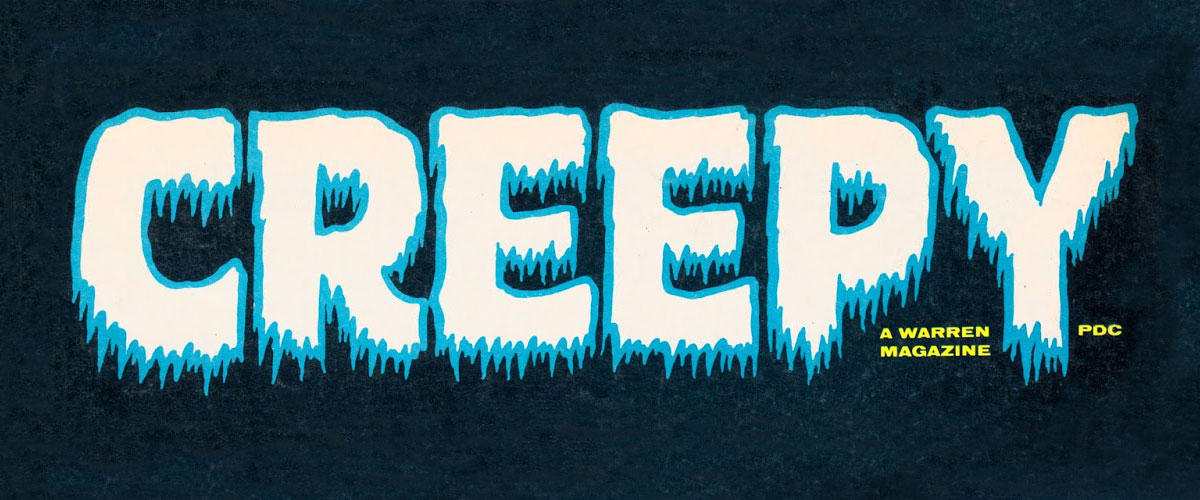
 Fantagraphics’ upcoming biography of publisher James Warren, by Bill Schelly, titled James Warren: Empire of Monsters – The Man Behind Creepy, Vampirella, and Famous Monsters is a horror nerd’s dream. Replete with the history of multiple iconic publications, it’s not only the tale of Warren’s life, but that of magazines like Famous Monsters of Filmland, Help!, Creepy, and Eerie.
Fantagraphics’ upcoming biography of publisher James Warren, by Bill Schelly, titled James Warren: Empire of Monsters – The Man Behind Creepy, Vampirella, and Famous Monsters is a horror nerd’s dream. Replete with the history of multiple iconic publications, it’s not only the tale of Warren’s life, but that of magazines like Famous Monsters of Filmland, Help!, Creepy, and Eerie.
Were Warren to have only published Famous Monsters of Filmland, his contribution to fandom would’ve been lauded for generations. However, given that the likes of Creepy and Eerie brought the work of EC-era artists to a whole other group of kids, he gets another set of plaudits to his name.
Reading through Empire of Monsters, one gets a series of parallel stories. Firstly, there’s the story of publisher Warren, which tells the tale of a Jewish kid raised in Philadelphia who manages to take his love of comics and turn it into a lifelong career. It’s interesting, but really works best as a storyline to tie together what really makes up the most interesting aspects of Schelly’s book.
One of those aspects, which is how fandom influenced the careers and trajectories of Warren and his cohort Forrest J. Ackerman, yet diverged in the way the pair each treated fans once they were established in positions of power, is arguably the most fascinating part of Empire of Monsters. The reader sees how Warren disparaged fans and fandom in the early years of Famous Monsters, yet would later come to embrace them, whereas Ackerman was “one of us” done good, always and forever (well, maybe not forever).
The second aspect is the way the publishing industry changed over the course of Warren Publishing’s existence. While it’s only touched on ever so slightly, the rise of Diamond as a comics and publication distributor really started to affect how even magazines found their way to newsstands and comic shops. It’s fascinating to see how the numbers of the magazine issues printed, issues returned, page counts, percentage of reprint material in each issue; combined with the way in which Captain Company, Warren’s merchandise selling arm in order to generate profits. It’s a spectacular rise, fall, and rebirth, leading to a quite abrupt and sad demise. The stories are, obviously, interesting, but I wonder how much of this is due to the fact that biographer Schelly is dealing in names with which I’m quite familiar? The author offers up capsule histories of the various artists and writers, as well as where they came from, so a reader not as well-versed in horror comic arcana can read along and get a general sense of what’s happening.
 For those who didn’t spend their early years in double digits reading reprint after reprint of The Haunt of Fear, Tales from the Crypt, or Shock SuspenStories might find themselves a little bit out to sea while working their way through the middle of Empire of Monsters. It’s rife with references to all of those characters from that time, so a general working knowledge is required to really get the full effect.
For those who didn’t spend their early years in double digits reading reprint after reprint of The Haunt of Fear, Tales from the Crypt, or Shock SuspenStories might find themselves a little bit out to sea while working their way through the middle of Empire of Monsters. It’s rife with references to all of those characters from that time, so a general working knowledge is required to really get the full effect.
The same goes for the magazines for which Warren is famous. While a few pages of Creepy and Eerie get reprinted, there’s not a lot of Famous Monsters of Filmland beyond cover images. A primer, featuring some of Ackerman’s pun-laden prose, or maybe a full horror comic story, might’ve really driven the point home, rather than short summaries of these wonderful tales.
Bill Schelly’s James Warren: Empire of Monsters – The Man Behind Creepy, Vampirella, and Famous Monsters is well worth picking up if you’re into ’60s and ’70s horror comics and film fandom and want a look behind the curtain into what made some of the era’s most notable and long-lasting titles tick. Those who aren’t aficionados might find it a little inside baseball, however, although the lavish descriptions of some of the more iconic Creepy stories might see a few new fans tracking down the reprints and collections from Dark Horse.
James Warren: Empire of Monsters – The Man Behind Creepy, Vampirella, and Famous Monsters is out February 26 from Fantagraphics. You can pre-order the book here.




